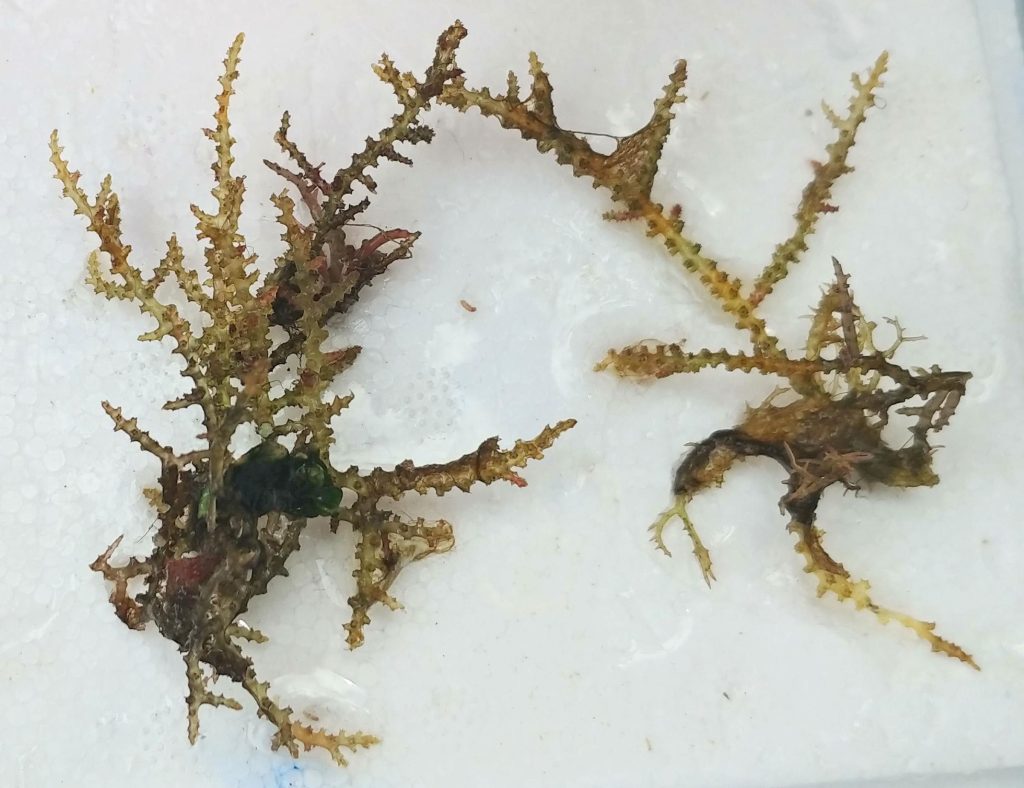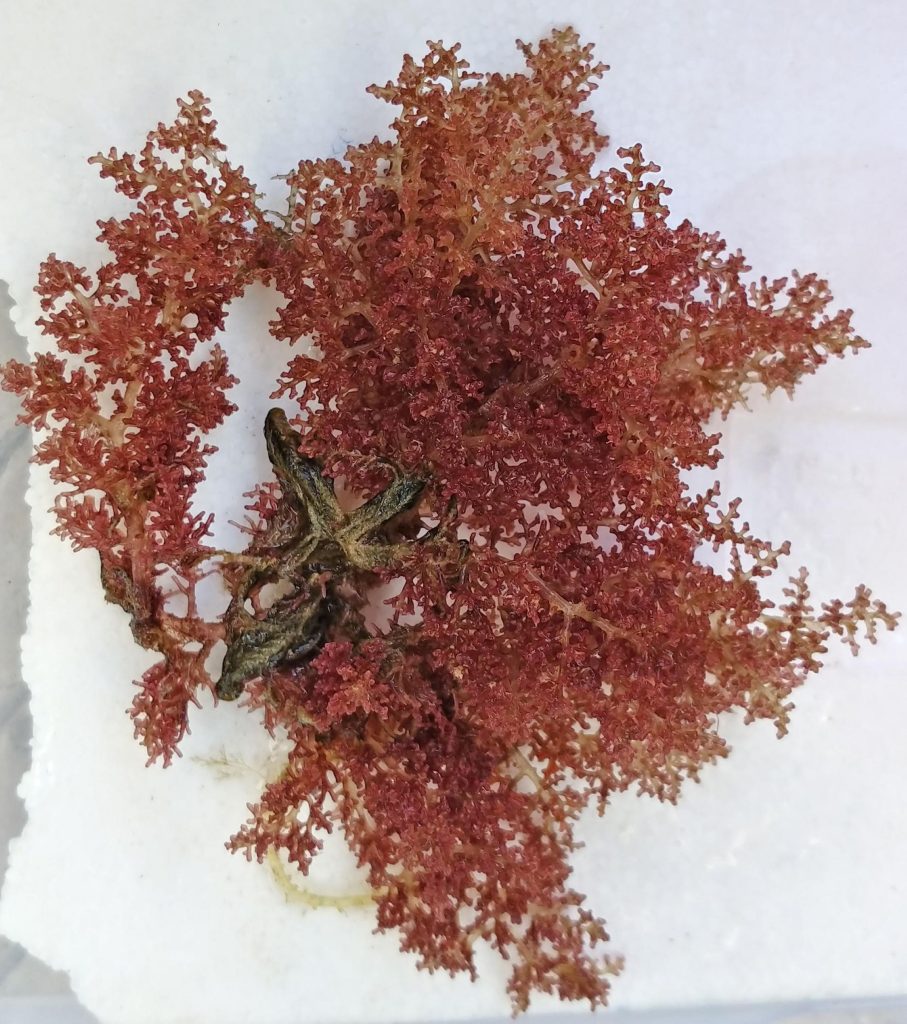UH researchers find invasive seaweeds outcompete native species in nearshore waters with high salt level
If you traverse some of Hawaiʻi’s shorelines — specifically parts of Hilo on the east side of the Big Island, Oʻahu’s south and east shores and portions of Maui — you’ll notice seaweed in the water.
Seems pretty normal for the ocean, right?

But there’s a good chance that seaweed could be an invasive species that could have an adverse effect on the seafood we eat and the health of Hawaiʻi coral reefs.
University of Hawaiʻi at Mānoa botanists have uncovered survival strategies these invasive seaweed species use in nearshore ecosystems — areas that extend up to 300 feet offshore and encompass shallow coastal waters where land and ocean environments interact and many marine species live and feed — that can potentially explain their dominance over native Hawaiian limu.
“Understanding how invasive seaweed outcompetes native limu is crucial to furthering our knowledge about reefs and ocean environments,” said Veronica Gibson, a postdoctoral researcher at the UH-Mānoa Hawaiʻi Institute of Marine Biology and Heʻeia National Estuarine Research Reserve as well as a UH-Mānoa School of Life Sciences PhD graduate. “These spring-fed coastal areas are unique ecosystems that connect our land use practices directly to ocean health, and what happens to limu — which forms the base of our marine food web — affects everything from the fish we catch to the overall health of our coral reefs.”
An October 2024 study published in Scientific Reports found that invasive species such as gorilla ogo and spiny seaweed thrive in areas with submarine groundwater discharge, where daily tidal cycles create extreme salinity, or salt level, fluctuations.
The research team used advanced plant biology techniques to study how different seaweed species cope with these harsh conditions.
The research involved measuring how seaweed cells adjust their internal chemistry when exposed to changing salt levels in the water.

The findings come as humans continue to impact watershed systems and submarine groundwater discharge.
Submarine groundwater discharge occurs when fresh water from underground aquifers seeps or flows directly into the ocean through the seafloor, creating areas where fresh and saltwater mix near the shore.
Researchers emphasize the importance of understanding how native species survive in these conditions as changes in water quality and quantity affect nearshore ecosystems, potentially influencing food webs and coral cover.
Much like a dried grape swells in water, seaweed cells react to changes in their environment.
The scientists found that successful species can quickly change the concentration of dissolved substances inside their cells to match external changes.
This ability to regulate internal water pressure is crucial for survival.
Seaweed species that can’t adjust quickly enough suffer severe damage — their cells either burst from taking in too much water or shrivel up from losing too much water.
The invasive species showed remarkable adaptability and developed other survival tactics.
Both types showed thinner cell walls in spring-affected areas, while gorilla ogo displayed peak photosynthesis near freshwater springs and developed smaller cells to better handle stress.
Native species, including limu maneʻoneʻo, were notably absent from spring-influenced areas despite showing similar cellular characteristics to invasive species in offshore environments.
Further research will focus on native limu tolerance and linking findings to watershed management strategies, particularly in areas affected by nutrient pollution from groundwater springs.
Other authors on the paper are Angelene Dedloff, who earned her bachelor’s degree from the UH-Mānoa School of Life Sciences; Kapiʻolani Community College assistant professor Lisa Miller; and UH-Mānoa School of Life Sciences Professor Celia Smith.
The Hawaiʻi Institute of Marine Biology is housed in the UH-Mānoa School of Ocean and Earth Science and Technology, and the School of Life Sciences is housed in the UH-Mānoa College of Natural Sciences.









